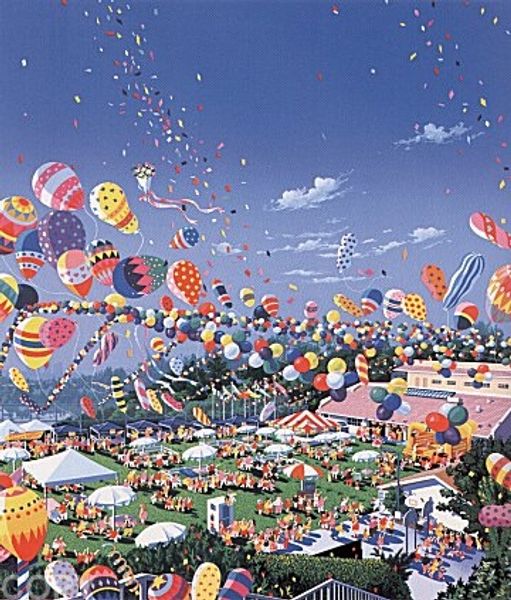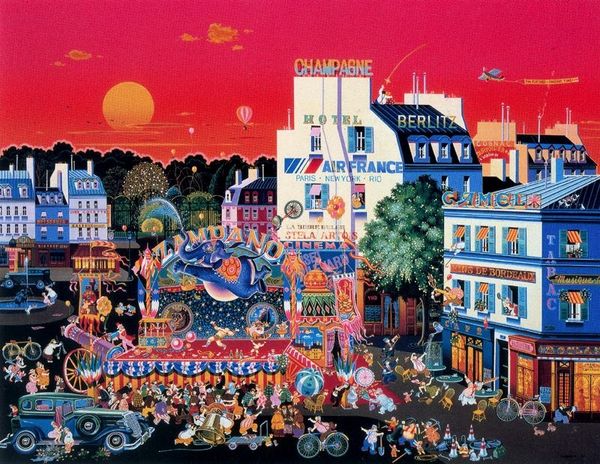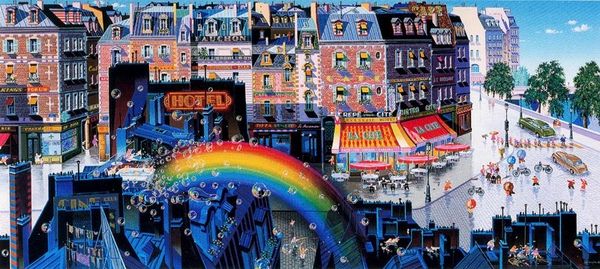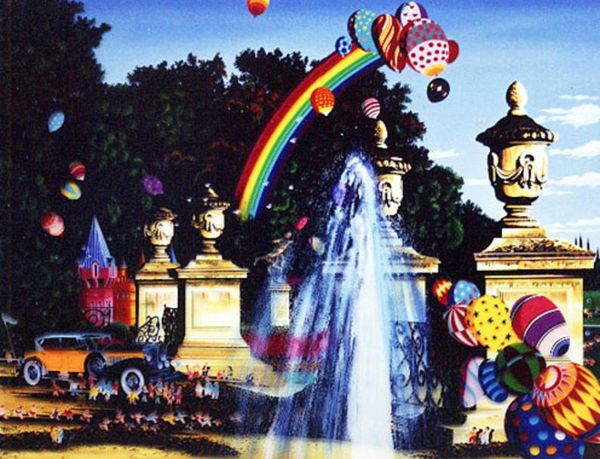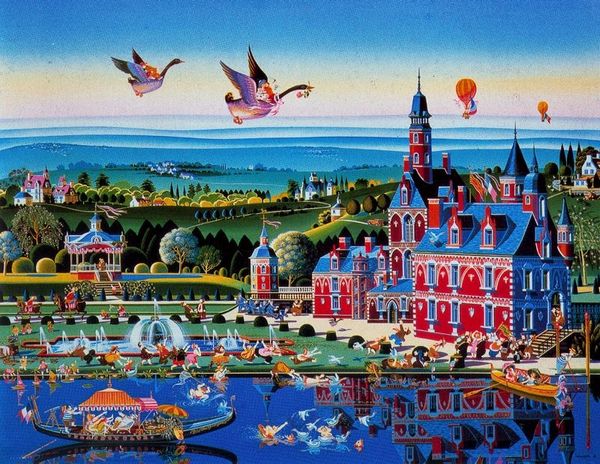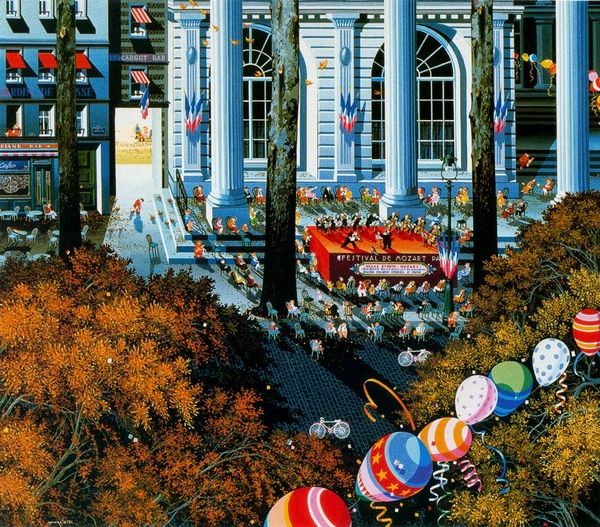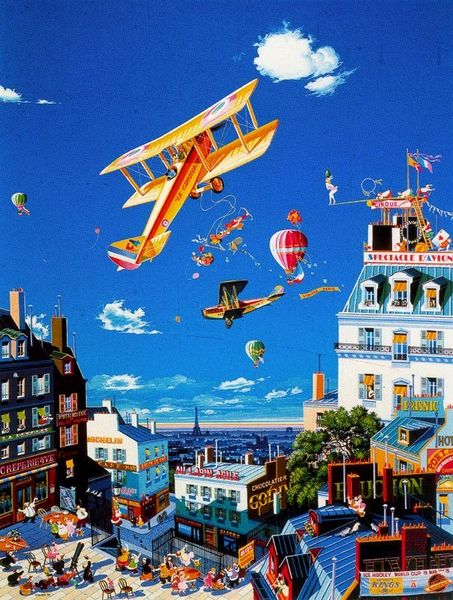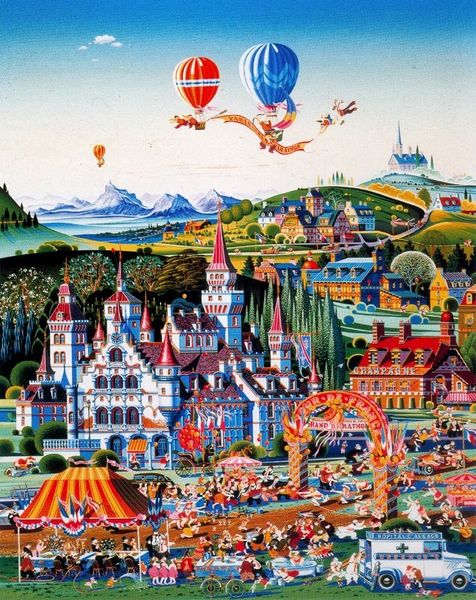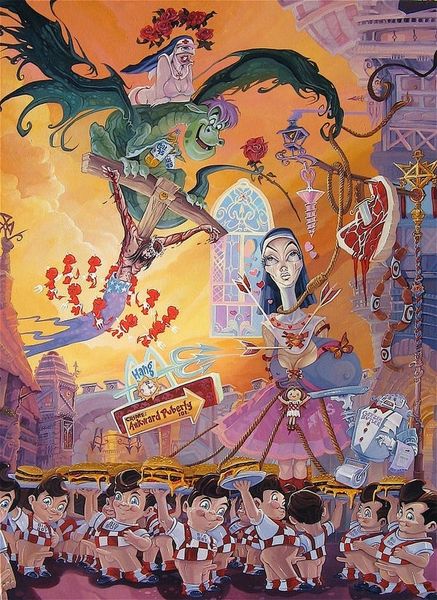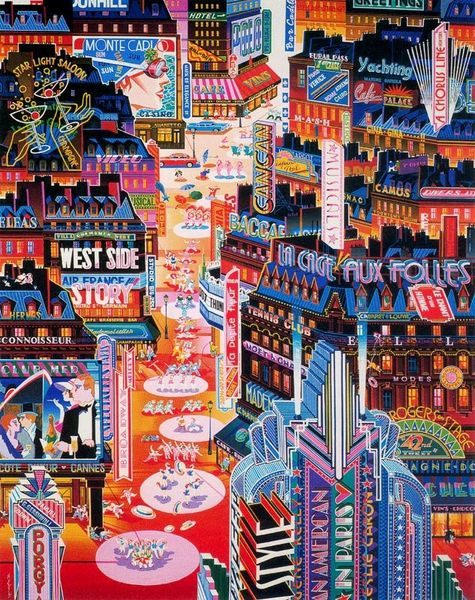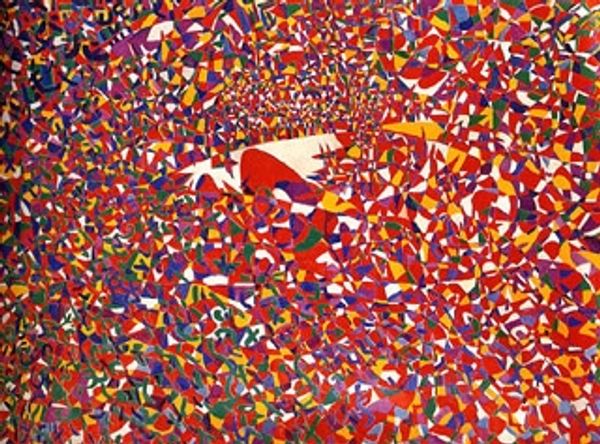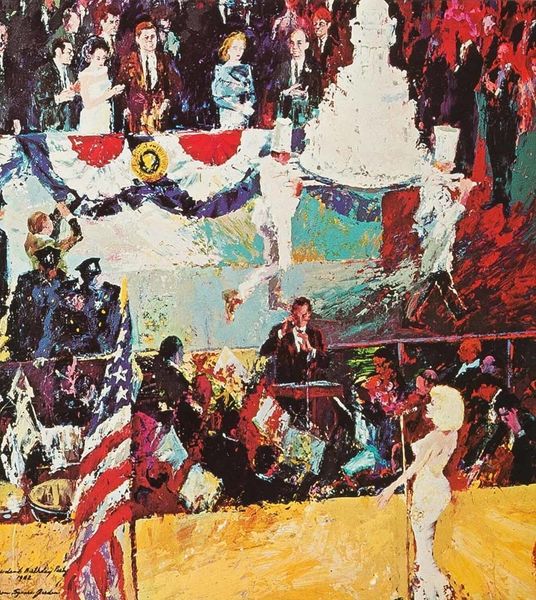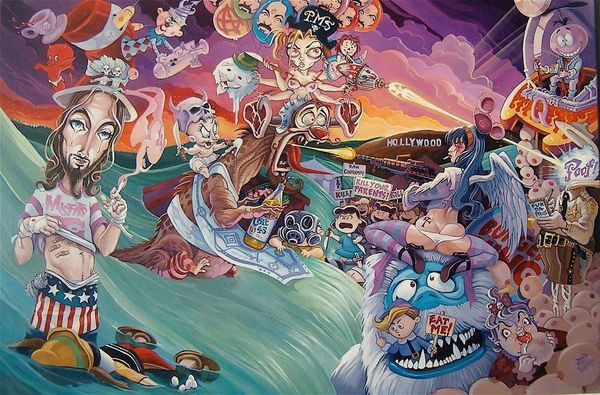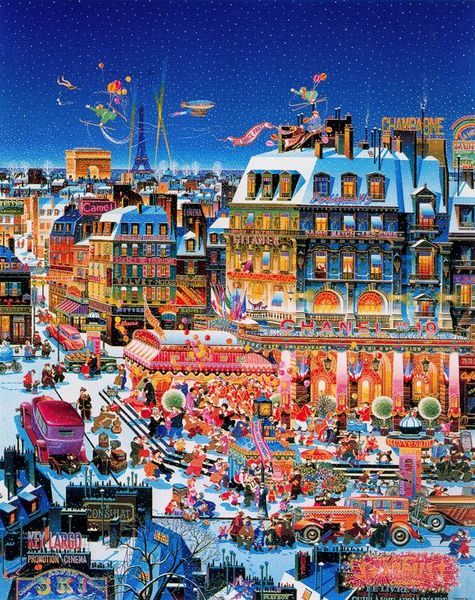
painting
#
popart
#
painting
#
stain glass
#
naive art
#
pop-art
#
cityscape
Copyright: Hiro Yamagata,Fair Use
Curator: Wow, what an exuberant scene. I immediately think of summer festivals and childhood wonder, almost like a theme park come to life. Editor: I see that immediately too, but it strikes me as something more ambivalent. Let's delve into Hiro Yamagata's "American Train." Look closely, and we find an image teeming with American iconography set against a vaguely surreal, almost utopian cityscape. It practically shouts Americana, doesn't it? Curator: It does! The repetition of motifs is hard to ignore. Tell me more about what to make of this repetition as a method and perhaps statement on manufacture and mass culture. I would like to draw attention to Yamagata's laser light shows, as this experience influenced the development of his style in a move toward more immersive, experiential environments and media practices, similar to Nam June Paik. Editor: Certainly. We're looking at this picture now. You see balloons adorned with stars and stripes, a proud, large American flag, and that incredible rainbow looping across the skyline – it's a constructed idealism. Note the way the artist pulls the viewer into the scene, positioning us among a jubilant crowd lining the tracks. I find myself reflecting on how celebratory events are themselves carefully constructed spectacles, and if Yamagata is drawing attention to their artificiality in some way. Curator: It certainly draws me in through its candy-colored surface. When I see the "naive art" tag I have to admit it throws me off, though. The term seems to diminish this detailed craftsmanship by suggesting that "naive" refers to technique, and in fact might have to do with the cultural or personal experiences and access of the artist, such as not being able to afford the materials and trainings necessary for being a so-called capital 'A' Artist. Editor: I appreciate your hesitation in dismissing art labeled as “naive". I encourage questioning these categorizations. Yamagata arrived in the United States on a fellowship, which offered opportunity for an artist educated in Japan to gain more visibility and connections on the art scene. One possible avenue into understanding Yamagata’s influences may be through fellow artist Takashi Murakami’s work with post-war Japanese art as a response to cultural and societal pressures. I think there’s something relevant here. Curator: It may be time to re-think the use of these terms when applied to any form of production, or labor! Editor: Exactly. These conversations remind me of art historian Linda Nochlin's influential question: "Why have there been no great women artists?" which really sought to examine why recognition in art history often overlooks many different backgrounds, including the different types of material and labor practices. Curator: A worthwhile insight to conclude with – urging us to think deeply about art, access, and the construction of celebratory narratives. Editor: Absolutely, and hopefully prompting our listeners to seek the overlooked and question the status quo!
Comments
No comments
Be the first to comment and join the conversation on the ultimate creative platform.
